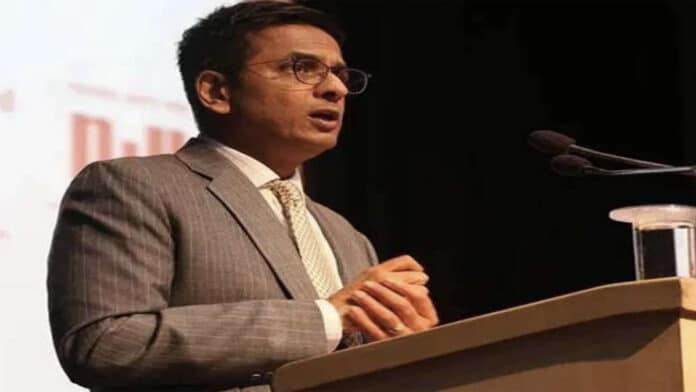Chief Justice of India Justice D Y Chandrachud Wednesday said that internet facilities should be set up within the courtrooms with firewalls in place to ensure that the facility is put to genuine and authorised use.
Inaugurating several e-initiatives and a new administrative block of the Calcutta High Court through the virtual mode from the Supreme Court, the CJI said that the adoption of technology is for the needs of “tomorrow and today.”
Reminiscing of the era when mobile phones were banned in many courtrooms, he said “and here we are today releasing a mobile application for the high court.”
Recalling a recent incident wherein he heard about a young lawyer working on her IPad in a courtroom of a premier high court when the usher of the court told her that she has to switch off the gadget because it is not in accordance with the discipline of the court.
“I said that we are carrying our discipline too far; a lawyer working on an Ipad within the precincts of a courtroom should be allowed to work on it so long as they are not watching movies from the Ipad or their laptops,” the CJI said.
“We must set up internet facilities within our courtrooms and of course have adequately maintained firewalls so that the facility is put to genuine and authorised use,” he said.
The CJI said that the Supreme Court has commenced a new initiative for translating its judgements in every language recognised by the Indian constitution and that 3,000 such judgments have already been translated in different Indian languages.
“I would earnestly appeal to the Calcutta High Court as well to … ensure that your judgements are available in simple language to the people as we understand the language,” he said.
The CJI said that this will truly ensure that the judiciary reaches out to citizens.
Chief Justice Chandrachudsaid that rather than choosing a strategy where technology is designed to respond to problems which have already arisen, a strategy must be embraced where the existing systems are periodically revamped by using technology.
“If we do this, we will be able to meet any challenge head-on regardless of whether the challenges are foreseen,” he said.
The CJI said that the e-committee of the Supreme Court, which he heads, had been expanding the technological capacities of the courts long before the Covid-19 pandemic struck in 2020.
“It was because of this that we were able to conduct virtual hearings during the pandemic,” he said.
Holding that public institutions must not lag behind private entities or individuals when it comes to the adoption of technology, he said that they must instead lead the way.
The CJI lauded the Calcutta High Court for “doing exactly this” by initiating several e-services meant for litigants, lawyers, registry and the bench.
“Today we have launched the Calcutta High Court mobile application, a justice clock for the high court, a personal information system software, e-filing and we inaugurate e-seva kendras,” he said, following which he inaugurated the services through the virtual mode from the Supreme Court.
The CJI said that the Calcutta High Court mobile applications will be available in both android and IOS operating systems.
He said that the litigants too will find the applications very useful because the citizenry is able to afford mobile phones more easily than they can afford desktops or laptops.
“If a litigant wants to check the status of their case they will find it far easier to use the mobile app than the web browser,” he said, adding that technology makes the justice system more accessible to all the strata of society.
Holding that the judiciary cannot afford to leave any segment of citizens behind, he said that among the advantages of e-seva kendras, the foremost virtue is that they ensure that every lawyer and litigant is able to reap the fruits of the collective technological progress.
He expressed hope that e-filing will be implemented in every district of West Bengal, while lauding the implementation of the service at the City Civil Court, Calcutta, and at the commercial court complexes at Alipore, Asansol and Rajarhat and inauguration of e-seva kendras at Bankura, Purulia, South 24 Parganas and Purba Medinipur districts.
Stating that over Rs 7,000 crore have been allocated for the phase III of the e-courts budget, he said, “funds will not be a constraining factor for us anymore, the constraints will be our own ability to design, manage and implement a project of this magnitude.”
He said that with the anticipated release of the first tranche of funds for phase III, planning must begin now on how to utilise the funds for the judiciary in West Bengal and ensure that these funds are put to use immediately and for good purpose.
Chief Justice of Calcutta High Court Justice Prakash Shrivastava, Justice T S Sivagnanam, Justice I P Mukerji and other judges of the high court were present at the function which was held at the sesquicentenary building of the high court.




